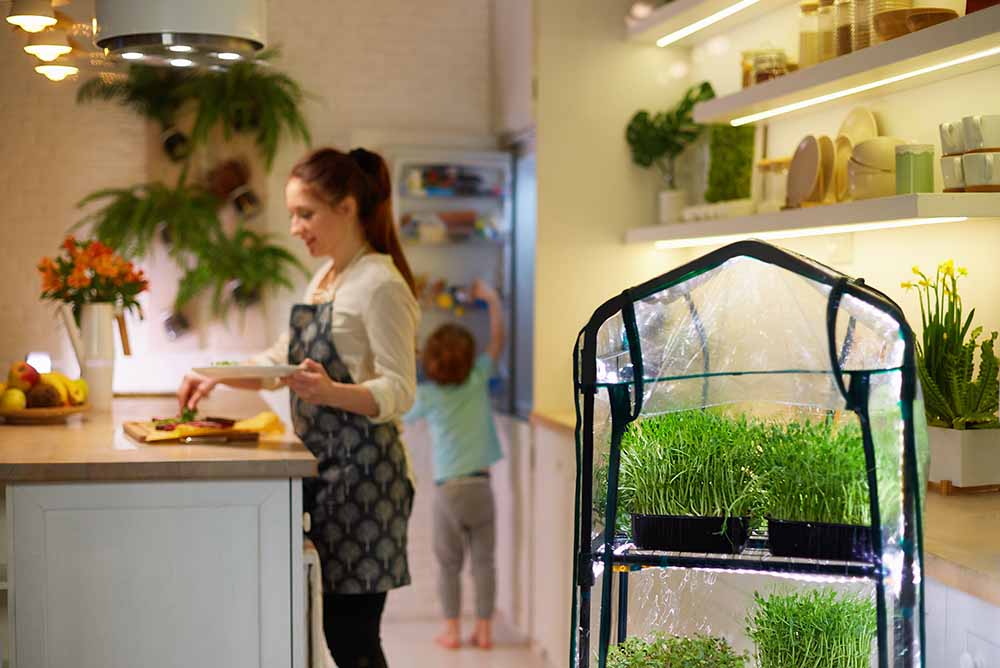
Do you love the idea of an indoor, year-round garden? Then consider trying a hydroponic garden. These soilless gardens are becoming more and more popular as Canadians are learning to grow their own produce at home. Here’s what you should know about getting started with hydroponic gardens.
What is hydroponic gardening?
In the simplest sense, hydroponic gardening allows you to grow plants without soil. In a traditional garden, the plant roots need to seek out nutrients in the soil. However, in hydroponic gardening, the water does all the work, which means that plants have fast and easy access to the nutrition they need.
Advantages of hydroponic gardening
Hydroponic gardening is becoming a very popular method of gardening for several reasons, including the following:
· They don’t take up much space
· You can have one pretty much anywhere
· Since they can be indoors, you can grow year-round without having to worry about outdoor weather conditions
· The lack of soil cuts down on the risk of pests
· Plants in a hydroponic garden tend to grow faster than those planted in soil
Disadvantages of hydroponic gardening
While the above advantages make the idea of hydroponic gardening attractive to many, there are a few downsides to this method as well. Here are a few things to keep in mind before you start:
· It can be expensive thanks to the systems
· There is a learning curve that takes a while to understand before you can get up and running
· The system does need to be regularly monitored to ensure everything is working properly
· The plants are more delicate and vulnerable without soil protecting roots
· While the lack of soil limits the risk of pest infection, waterborne diseases can still be a problem
How to get started with hydroponics
Ready to give a hydroponic garden a try? Here are 7 steps to get you started.
Step 1: Choose your plants
The first thing is to decide what you would like to grow. Knowing what you want to grow will help you decide what system to use as well as other important factors in creating your hydroponic garden. Keep in mind that just like with traditional gardening, some things are easier to grow than others, so it’s recommended that you do some research if you are just starting out. You can then expand later.
Step 2: Germinate your seeds
Once you have decided on what you would like to grow and purchased the seeds, you will need to germinate them before you can transplant them into the system. There are a couple of different options for this; you can use soilless potting mix or even germination plugs to get your seeds started. Either way, you want to make sure that there is plenty of moisture and optimal temperature. Different seeds will have different needs, so take care to the follow instructions for whatever it is you choose to grow.
Step 3: Decide on your hydroponic system
There are several varieties of hydroponic systems you can use to start your garden. What you choose will depend on what you are trying to grow, how much space you have, your budget, and so on. Some systems are easier to get started with than others, so keep that in mind when doing initial research. Whatever you choose, start small and once you get the hang of things, you can look to expand your system or even try a couple of different ones.
Step 4: Figure out a light source
Again, this will depend on the type of plants you want to grow as well as what type of hydroponic system you are using. Light is a very important factor in all types of gardening, and you’ll want to make sure that you have enough of it depending on the needs of your plants. In many cases, natural light won’t be enough, so you will want to get additional lighting. Full-spectrum LED lights are often effective for a variety of plants and are generally budget-friendly.
Step 5: Pick a hydroponic grow medium
This is what your plants will grow in. Since you aren’t using soil, you have a variety of substitute options including clay pebbles, aged tree bark, coconut fibre, and even just water. Again, what you choose should match with whatever plants you are growing as well as the system you are using.
Step 6: Purchase nutrients, supplements, and pH meters
Next on the list is the nutrients needed for your plants to grow since you’re not using soil. You can also get some supplements that will help boost the growth of your plants, plus keep them stronger and less susceptible to any diseases.
Proper nutrition is key for your plant’s growth and survival, so it’s also recommended to monitor the pH levels of your nutrient solutions. You can buy testing kits that include strips or meters to measure this. If your solution needs to be adjusted, you can also buy products called pH up and pH down that will allow you to correct the nutrient solution as needed.
Step 7: Start your system
When your seeds have been germinated and you have your system set up, it’s time to get started! Test the system once it’s ready and run water through it to ensure everything is working. Then you can mix your nutrients, test the pH and transplant your seeds. Finally, set the timer on your light accordingly and there you have it! You now have a hydroponic garden. Happy gardening!
Hannah Logan is a Canadian travel writer who dreams of being just like Indiana Jones. You can follow her travels on her personal travel blog
Eat Sleep Breathe Travel where she shares her travel tales and (mis)adventures around the world.